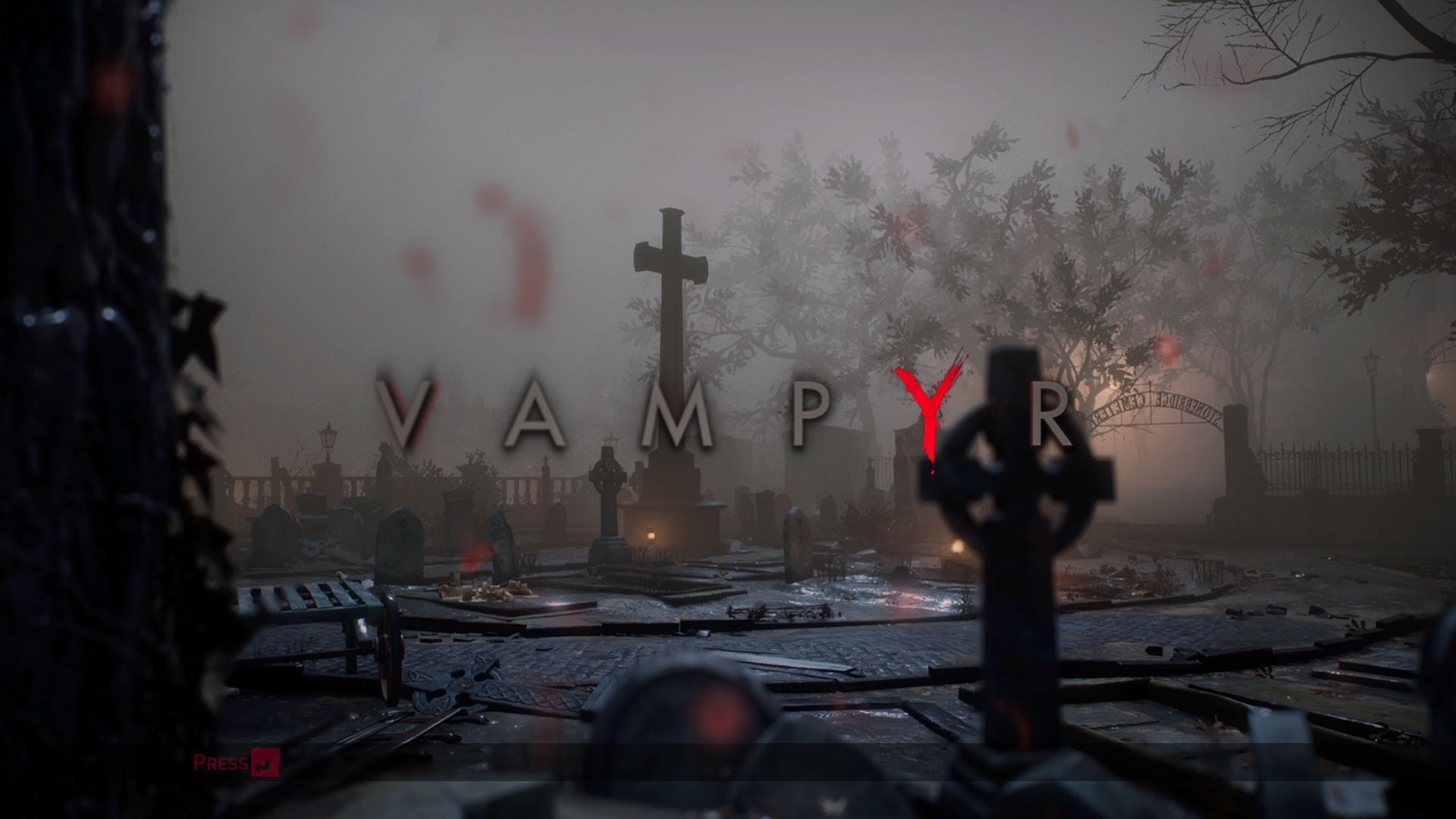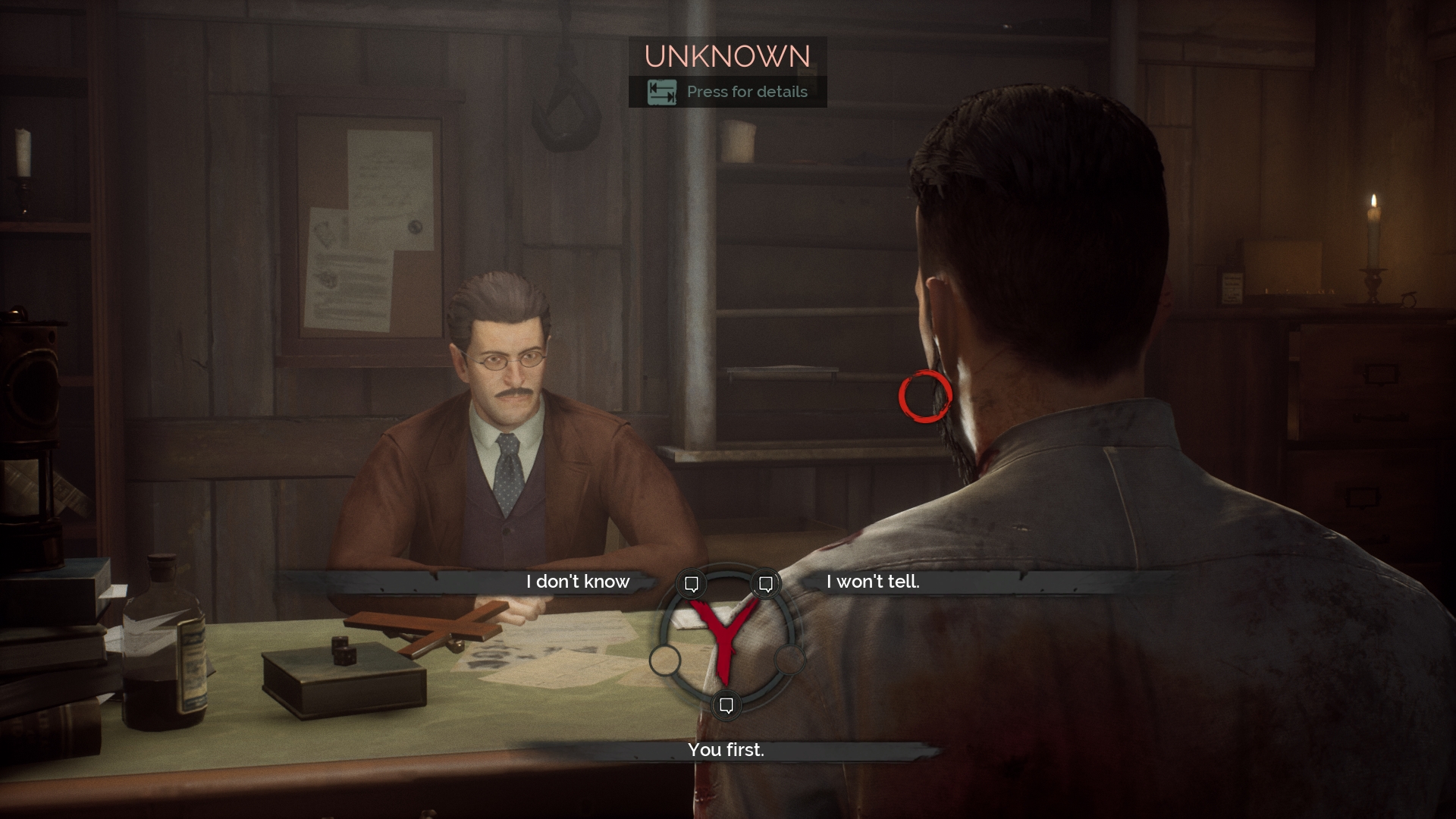
Developer: Dontnod Entertainment; Publisher: Focus Home Interactive
Release Date: June 4th, 2018; Reviewed on: PC
Testing Specifications: Intel Core i5-6500, 16GB RAM, GeForce GTX1070
Available on: Steam
Striking a vast contrast with developer Dontnod’s other games, Vampyr is a dark and gritty adventure set in Victorian London. With a unique spin on player choice, the game presents an interesting dilemma for players in both story and game design aspects. Doctor Jonathan Reid is a renowned surgeon trying to help those in need, but at the same time happens to be a newborn vampire with a thirst for blood. Vampyr thus makes players question the nature of their actions. Will you try to heal everyone in one of its districts? Or will you let the city succumb to complete darkness? It is an interesting setup rarely presented in gaming, although execution of such vital choice is often lacking. Nonetheless, Vampyr is an engaging adventure game well worth playing for its intrigue, mysterious characters and exploration.

At the core of Vampyr’s storytelling aspect is it’s choice dilemma, which reflects on the world and player actions can carry significant consequences. In each district there are slightly over a dozen named NPCs Dr Reid can engage in conversation with, learning more about their backgrounds and the world around him. Spending time to learn clues about characters is a big part of increasing their viability if you choose to feed on them later, but having spent time engaging with them you’d be hard pressed to avoid doing so. Vampyr’s moral choice system presents tough decisions for the player, as you can throw away about an hour of gameplay you’ve spent investing into backstory of a certain character and their side investigation.
The moral choice system ties significantly into gameplay as well, as each of London’s boroughs have a condition meter. A healthy district is at its best, although characters can still contract diseases, and you can choose to craft medicine to improve their condition. On the other end of the spectrum is hostile, where the location is filled with monster creatures and vampire hunters to hinder your progress, and named characters will be disappearing after every night. This element almost encourages a pacifist playthrough, as killing off characters spikes up the game difficulty. Vampyr wants players to debate their choices, as well as presenting a moral aspect to character actions. Being in a doctor profession, the protagonist’s morals will be afflicted by feeding on victims, even if Reid doesn’t express it apart from the the very first in-game moment.

A considerable amount of time will be spent engaging in conversation with NPCs, which usually reveals secrets about their background and role in the world. Each character has about 3-4 to unlock, half of which are obtained from them directly, and the rest has to be found from their social circle, as well as their surrounding environment. It is an interesting take on dialogue, and exploration ties into this significantly by encouraging players into taking time to uncover a character’s background. Unfortunately the dialogue system is very basic, and has few elements to flesh it out. Most conversations are structured similarly, with Reid asking NPCs about their background, thoughts on the city epidemic and other named figures surrounding them. The dialogue tree only has three or four short paths to inquire about, after which you would have asked them everything they could possibly tell you. At some points in the conversation, there’s three options to select in single dialogue, although they have no impact on the story. This system isn’t awful by any means, but for a game emphasizing story-driven elements that tie into all of its characters it is certainly lacking. Especially given you’re supposed to decide whether to spare them or feed on them for your powers.
At the same time, it almost feels like Vampyr encourages killing in certain places, and the game world can be afflicted choose you to spare certain inhabitants. Allowing one of the district pillars to live, for example, will plunge his borough into complete chaos, removing NPC characters along with their side quests. The game wants you to judge this on your own, figuring things out through character clues. There is no easy way to tell if your actions will carry a desired consequence, given some pacifist choices can still lead to the fall of a district.

Vampyr’s strongest points lie in its story development and character interaction, which unfortunately cannot be said of the combat. Fighting mechanics lack a lot of polish and generally feel clunky until you master them, which can be pretty difficult to do at times. Players have access to a variety of blunt objects and sharp blades, along with multiple side-arms, but I can hardly recommend two-handed weapons in this selection. Many enemies are fast, and attack frequently, so you may want to go with something that disposes of foes in a quick fashion. There is some variety to be found; between knives, hatchets and machetes Dr Reid has access to different attack speeds, while sidearms in form of pistols and shotguns are used to stun enemies and deal extra damage. Combat itself is rather simplistic, with stamina management being the only crucial part to it, necessitating careful timing for hits and movement. Otherwise Vampyr’s combat is a standard set of attack, dodge, then repeat, which doesn’t feel much interesting after you’ve played the game for over 10 hours.
More than once, I’ve found the fights to be frustrating, although it is never unfair. Vampyr tends to lock you in small areas with multiple enemies, which can be annoying especially when you can’t properly see all attackers. Depending on your style of playthrough, you may be overleveled very often, which is especially true when choosing to let every named NPC live. Fights against higher level enemies can be hard, although it isn’t very difficult to memorize attack patterns to get the job done regardless. Feeding on NPCs ties into this by awarding you a large dose of experience points if you choose to do so, at the expense of district health.

Vampire powers compliment the suite of largely unremarkable weapons, which is where you’ll invest experience points into. Combat awards only small doses of XP, but it is still entirely possible to complete the game without killing off named characters. Boss fights, side quests and main progression all award a considerable amount of points to work with, which make progression slow but still let it happen. Vampire powers are pretty interesting, although you wouldn’t be using them as much as you’d think. There’s a dash attack, blood barrier, regeneration, and a few interesting ultimates, although combat is quite serviceable without them. I mainly preferred to spend my points on health, stamina and blood upgrades, them being most useful in fighting.
A healthy variety in enemy designs keeps Vampyr’s combat at least somewhat interesting, even if approaching fights revolves around repeatedly hitting things with your weapon of choice. Vampire hunters bring on melee and ranged attackers, enemies that are a combination of both, as well as priests that stun you while draining blood and stamina. Many use fire to deal long-term damage, although it isn’t too persistent to drain a lot of health. Fights against numerous enemies, which occur all the time, require timely dodging or you risk getting a good half of your health bar chopped up very quickly. Apart from humans, you fight ghouls, called skals in Vampyr’s universe, which include teleporting creatures and ranged attackers that projectile vomit in your direction. Annoyingly, all of them tend to leap at you throughout the fight, stunlocking for a brief period of time if you haven’t dodged out of the way.

Boss fights are the more interesting portion, as they are usually vastly different creatures with unique powers. Getting through them can be difficult at first, but memorizing their repeating attack patterns makes fights less challenging once you’ve died a few times. The checkpoint system is very generous, and respawns you into the same fight without losing much progress. While boss fights are engaging and require some skill, half of them aren’t particularly well designed at the same time. More than once they are a take on simpler enemies with health bars elevated tenfold, which doesn’t make things as interesting as one would hope.
There is no complete way to avoid combat, which is a downside in a story-driven game, although these sections nicely diversify exploration and dialogue sequences. Weapons can be upgraded to improve their stats through a simple system, whereby you gather materials throughout the city and loot the enemies you’ve killed. The crafting component isn’t very fleshed out, but then it doesn’t really need to be. Medicinal resources can be used to craft different remedies to cure illnesses and healing items for the player. It is pretty straightforward, with each potion clearly indicating the requirements for it, usually consisting of some chemical elements and glass vials.

With four major districts to explore, Vampyr isn’t a huge game, although its small world features in-depth exploration to make it interesting. Dr Reid will visit the docks, a hospital which serves as his major base for research, a cemetery and a rich district of London. Spread throughout the districts are small safe houses, which can be used to level up to the character, refill ammo and craft potions. Most of these aren’t hard to find, located in accessible spots for the player and represented by a specific kind of door. In most cases, one has to dash upward to a ledge where a prompt appears, making use of Reid’s otherworldly speed which can also be used to traverse across the canals in certain points. Each district also serves players with a few branching paths to explore, although it still feels very linear, especially if all available routes are populated by enemies. Still, it is interesting to explore the dark streets and abandoned house, with the latter having many resources, as well as notes pertaining to certain characters.
There is a lot to like about Vampyr, from expert storytelling to the intrigue of its world, even if combat doesn’t always deliver. Its unique spin on a morality system makes Vampyr stand out, and the dilemmas with ability to kill of named characters made me think about my choices. While entirely possible to complete the game without sinking your teeth into any of NPCs, it made for a more engaging experience to debate on who deserves to live and die. Although Vampyr’s combat is barely challenging, and leaves a lot to be desired, it provides a good variety to the game’s deliberate exploration. Discovering the world and engaging with it is what you’ll mostly do throughout the experience, and that’s where Vampyr’s strengths shine.

Pingback: Vampyr will add two new difficulty modes | Challenger's Gaming Domain